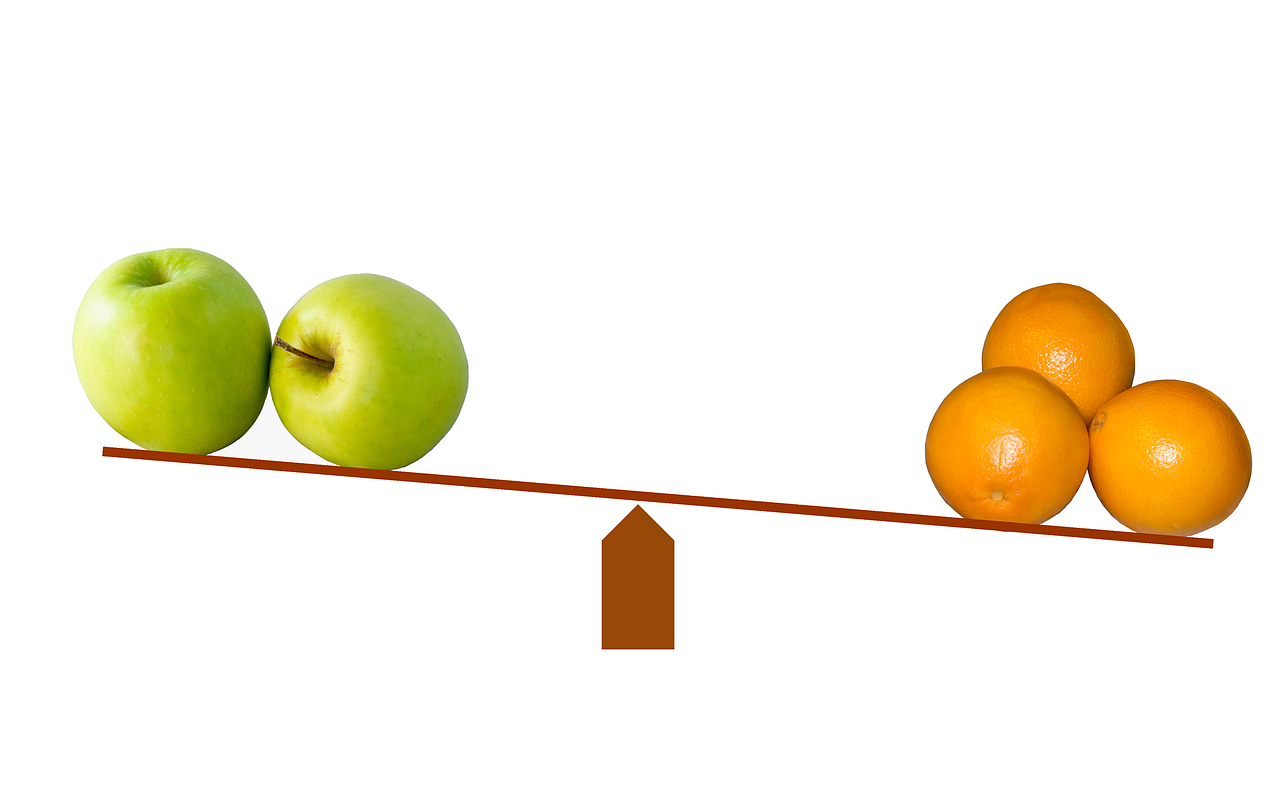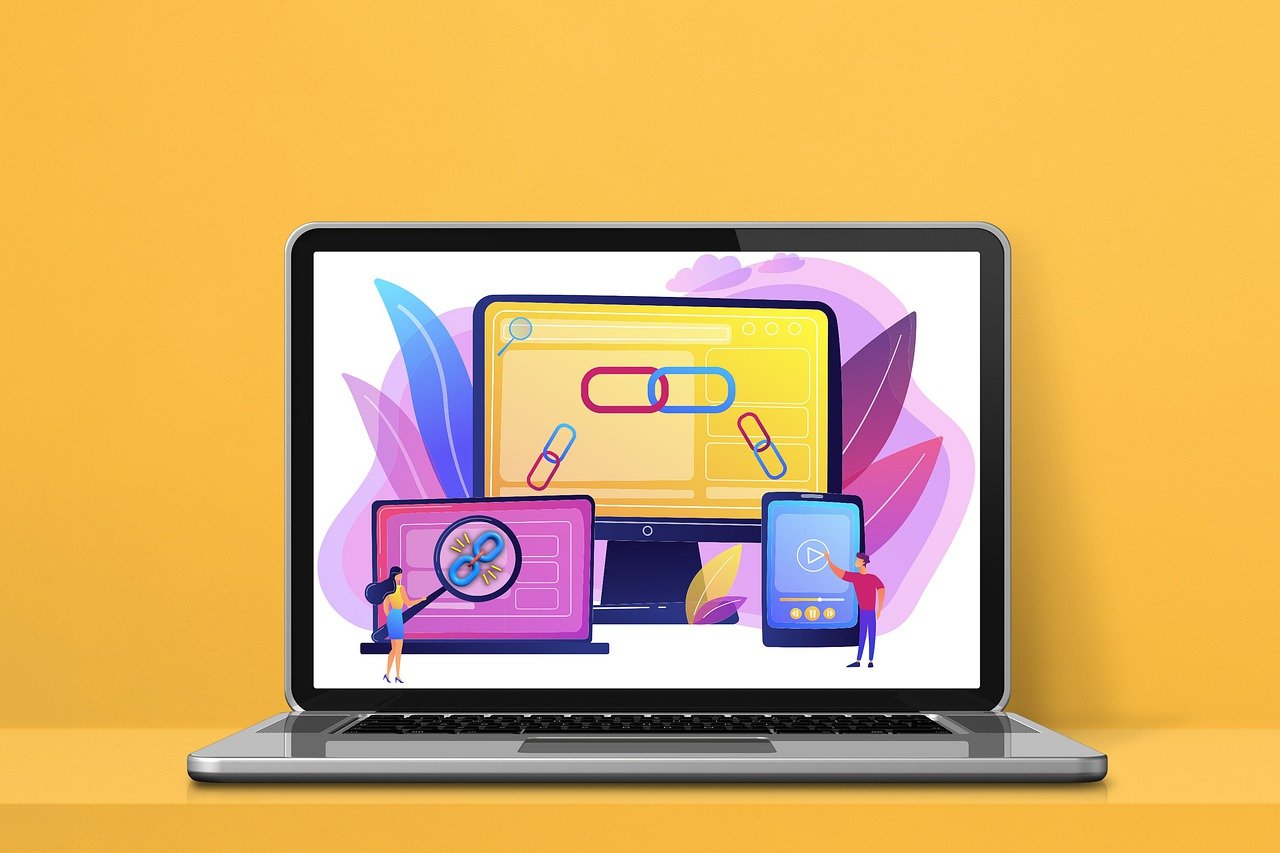A Guide To Social Media Algorithms & How They Work via @sejournal, @gregjarboe
Want to know how social networks determine which content makes it into users' newsfeeds? Learn more about the top social network algorithms. The post A Guide To Social Media Algorithms & How They Work appeared first on Search Engine...
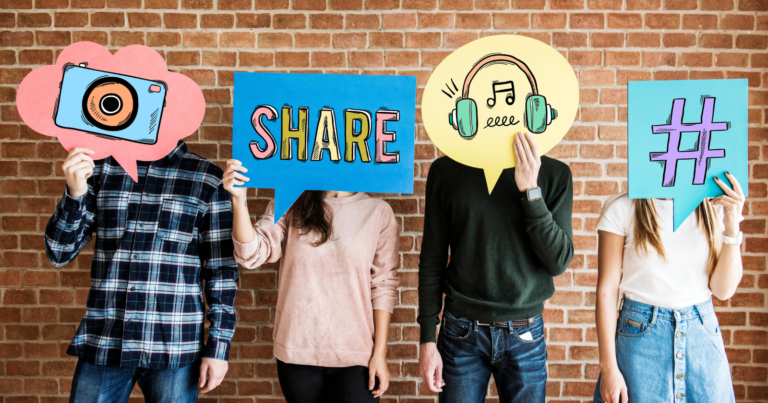
Why do so many marketers keep asking, “How do social media algorithms work?” Because the algorithms for the major platforms can change quickly.
But, marketers should also keep asking, “Which social media platforms have the most users?” Because that data can change frequently, as well.
So, here are the latest answers to the first question about the algorithms for the eight platforms that you should be considering today.
Spoiler alert: This update contains some surprising shifts in the latest data on monthly unique visitors, monthly visits, and monthly average visit duration from SimilarWeb.
How Does The YouTube Algorithm Work?
YouTube got 1.953 billion unique visitors worldwide in May 2022. The platform received 35.083 billion monthly visits that month with an average visit duration of 21:41.
Now, some social media marketers may be shocked, shocked to find YouTube ranking ahead of Facebook.
But, SimilarWeb’s data above is only for desktop and mobile web channels. It doesn’t include data for connected TVs, which became the fastest-growing screen among YouTube viewers in 2020.
This makes it imperative to know how YouTube’s algorithm works.
YouTube’s algorithm tries to match each viewer to the videos they’re most likely to watch and enjoy. But, with over 500 hours of video content uploaded every minute, this is a Herculean task.
YouTube’s search and discovery systems tackle this challenge by paying close attention to:
What viewers watch. What they don’t watch. How much time do they spend watching? What do they share and like?Next, you need to learn that YouTube has multiple algorithms, including ones for:
YouTube Search: Videos are ranked based on how well titles, descriptions, and video content match the viewer’s search and which videos get the most engagement for a search. Up Next: The ranking of suggested videos is based on machine learning’s understanding of which ones viewers are most likely to watch next. These videos are often related to the video a viewer is watching, but they can also be personalized based on the viewer’s watch history. Your homepage: Videos are selected based on how often viewers watch a channel or topic, how well similar videos have interested and satisfied similar viewers, and how many times YouTube has already shown each video to a viewer. YouTube Shorts: YouTube wants both short and long videos to succeed. So, relative watch time is generally more important for short videos, while absolute watch time is generally more important for longer videos.So, what should you do next?
First, read my column, How To Optimize YouTube Videos To Help Ukraine, which provides tips on keyword research, title optimization, writing descriptions, custom thumbnails, and other video SEO best practices.
Next, read Jon Clark’s article, 13 Key Elements Of Successful YouTube Videos. He focuses on how to make a great video.
Why is that important? Because YouTube’s search and discovery system “finds” videos for each viewer and their varying interests in order to get them to watch more videos that they’ll enjoy so they’ll come back to YouTube regularly.
How Does The Facebook Algorithm Work?
Facebook got only 1.620 billion unique visitors worldwide in May. The platform received 19.739 billion visits that month with an average session duration of 10:05.
Now, Facebook’s unique visitors started dipping worldwide in February 2022.
But, as you can see in the chart below, there was a substantial drop in unique visitors in Russia in early March, after Russia blocked Facebook in an effort to control the spread of information on the invasion of Ukraine.
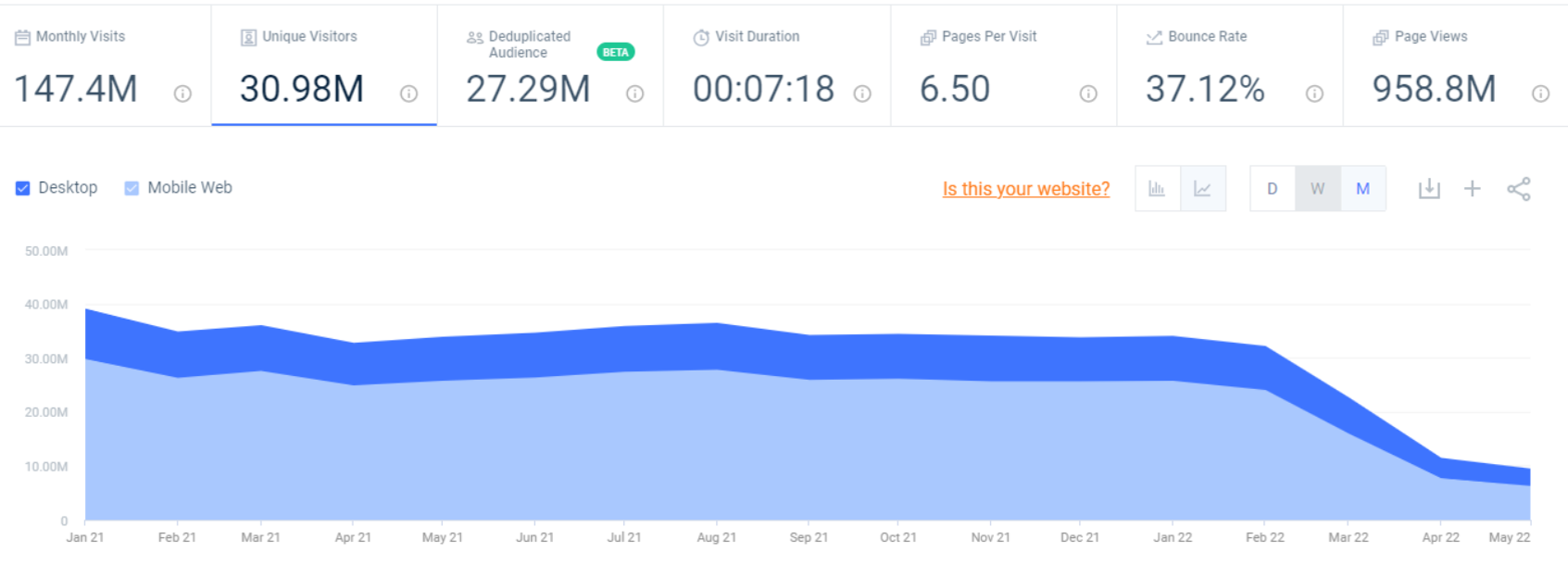 Screenshot courtesy of Similarweb, June 2022
Screenshot courtesy of Similarweb, June 2022
This had a negative impact on Facebook’s total unique visitors worldwide, which were already losing momentum. Nevertheless, the platform is still too big to ignore.
So, how does Facebook’s algorithm work today?
Well, we knew how Facebook’s News Feed ranking process worked in December 2021 when Anna Stepanov, Head of Facebook App Integrity, wrote a post that said:
“News Feed uses personalized ranking, which takes into account thousands of unique signals to understand what’s most meaningful to you. Our aim isn’t to keep you scrolling on Facebook for hours on end, but to give you an enjoyable experience that you want to return to.”
And she summarized half a dozen of the biggest changes Facebook had made in 2021 to give users more control over, and insight into, how content appears in their News Feed.
This included publishing a new series of Widely Viewed Content Reports to share what content is seen by the most people in News Feed in the U.S.
Ironically, Facebook’s latest Widely Viewed Content Report showed the top four domains in Q4 2021:
youtube.com (168.1 million content viewers). media1.tenor.co (118.4 million). gofundme.com (112.4 million). tiktok.com (105.0 million).But, then in February 2022, Matt G. Southern reported Facebook Shifts Focus To Short-Form Video After Stock Plunge. And on June 16, 2022, Southern reported Facebook To Restructure Main Feed Around Video Content.
So, what should you do next? First, read Southern’s stories and learn why Tom Alison, head of Facebook, plans to turn its main feed into a “discovery engine” for video content.
According to Alison, the main tab in the Facebook app will become a mix of Stories and Reels at the top, followed by posts that its discovery engine will recommend from across both Facebook and Instagram.
Next, follow Southern’s expert, authoritative, and trustworthy advice:
“The best way to prepare for this change, if Facebook is a priority for you and your business, is to get comfortable with creating and publishing more short form video. While Facebook will continue to surface text and photo posts, they’ll be ancillary to the main attractions of Reels and Stories.”
How Does The Instagram Algorithm Work?
Instagram got 1.050 billion unique visitors worldwide in May. The platform received 6.497 billion visits that month with an average session duration of 07:51.
Russia has also banned Instagram, but the growth in unique visitors from other countries around the world has offset that.
So, you still need to know how Instagram’s algorithms work.
In June 2021, Adam Mosseri, the head of Instagram, wrote a post entitled, Shedding More Light On How Instagram Works. He revealed:
“Instagram doesn’t have one algorithm that oversees what people do and don’t see on the app. We use a variety of algorithms, classifiers, and processes, each with its own purpose.”
For the Feed and Stories, the key ranking signals are:
Information about the post: How popular a post is, when it was posted, how long it is, if it’s a video, and if it’s attached to a location. Information about the person who posted: How many times users have interacted with that person in the past few weeks. User activity: What a user might be interested in and how many posts they’ve liked. User history of interacting with someone: How interested a user is in seeing posts from a particular person.For Explore, the key ranking signals are:
Information about the post: How popular a post seems to be as well as how many and how quickly other people are liking, commenting, sharing, and saving a post. User history of interacting with someone: (See above.) User activity: What posts a user has liked, saved, or commented on as well as how they’ve interacted with posts in Explore in the past. Information about the person who posted: (See above.)For Reels, the key ranking signals are:
User activity: Which Reels a user has liked, commented on, and engaged with recently. User history of interacting with someone: (See above.) Information about the reel: The audio track, video data such as pixels and whole frames, as well as popularity. Information about the person who posted: (See above.)So, each part of the app uses similar ranking signals, but their order of importance varies. Mosseri explained:
“People tend to look for their closest friends in Stories, but they want to discover something entirely new in Explore. We rank things differently in different parts of the app, based on how people use them.”
For more tips and advice, read the article by Shelley Walsh entitled, 22 Ways To Get More Instagram Followers Right Now. Then, read Amanda DiSilvestro’s article, How To Use Instagram Reels For Business.
How Does The Twitter Algorithm Work?
Twitter got 979 million unique visitors worldwide in May. The platform received 7.056 billion visits that month with an average session duration of 10.39.
This data does not screen for fake or spam accounts. Nevertheless, it’s worth investing the time and effort to keep up with how Twitter’s algorithm works.
Like most social media platforms, Twitter has multiple algorithms.
Twitter says its “algorithmic Home timeline displays a stream of Tweets from accounts you have chosen to follow on Twitter, as well as recommendations of other content we think you might be interested in based on accounts you interact with frequently, Tweets you engage with, and more.”
If users want to, they can click on the star symbol to see the latest Tweets as they happen. But, few people choose to drink water from a firehose.
If they want to, users can click on “Explore” and see Trending tweets or ones about COVID-19, News, Sports, and Entertainment.
If users want to, they can click on “More” to see the Topics that Twitter thinks they’re interested in.
Like most social media platforms, Twitter’s algorithms use machine learning to sort content based on different ranking signals.
And it’s worth noting that Twitter is currently involved in analyzing the results of its algorithms as part of its “responsible machine learning initiative.”
Here’s what Twitter has said publicly about its Home timeline, Trends, and Topics ranking signals:
Relevance:
Users’ previous actions on Twitter, like their own Tweets and Tweets they’ve engaged with. Accounts they often engage with. Topics they follow and engage with most. The number of Tweets related to a topic. For Trends: their location.Engagement:
For Tweets: “How popular it is and how people in your network are interacting with [the Tweet].” For Trends: “The number of Tweets related to the Trend.” For Topics: “How much people are Tweeting, Retweeting, replying, and liking Tweets about that Topic.”Recency:
For Trends: “Topics that are popular now, rather than topics that have been popular for a while or on a daily basis.”Rich Media:
The type of media the Tweet includes like an image, video, GIF, and polls.For more advice and tips, read Lisa Buyer’s article, 8 Terrific Tips To Optimize A Twitter Business Or Brand Profile. Then, read the article by Julia McCoy entitled, How To Be A Top Tweeter: 10 Tips That Will Get Your Tweets Noticed.
How Does The TikTok Algorithm Work?
TikTok got 690 million monthly visitors worldwide in May. The platform received 1.766 billion visits that month with an average session duration of 03:48.
This data doesn’t include Douyin.com, which is counted separately. But, as the chart below illustrates, TikTok.com gets about 98% of the unique visitors worldwide for both of the ByteDance apps.
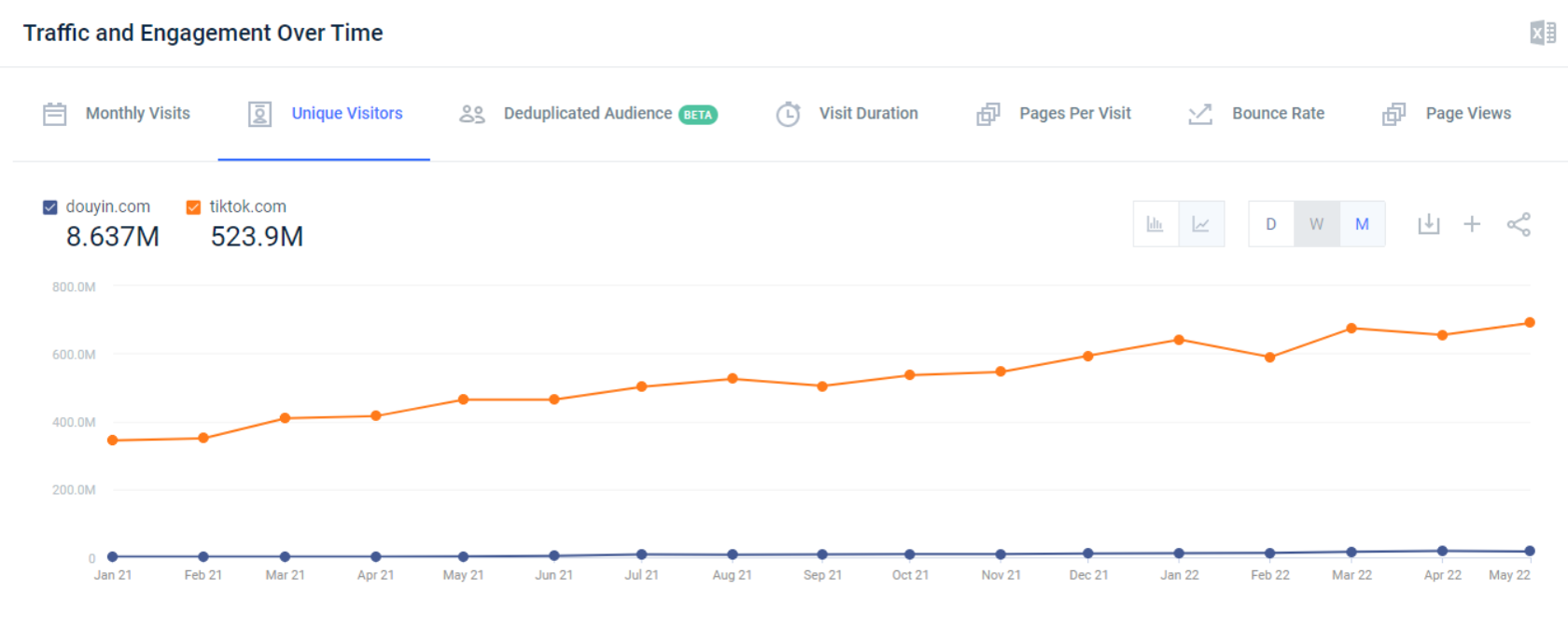 Screenshot courtesy of Similarweb, June 2022
Screenshot courtesy of Similarweb, June 2022
So, you should probably learn how TikTok’s algorithm works ASAP.
In June 2020, TikTok revealed how its recommendation system selected videos in a post entitled, How TikTok recommends videos #ForYou.
Little has fundamentally changed since then, except the U.S. government is no longer trying to ban the social media platform.
TikTok’s For You feed presents a stream of videos curated to each user’s interests, making it easy for a user to find content and creators they love.
In other words, there isn’t one For You feed for over one billion monthly active TikTok users. There are a billion For You feeds tailored to what each user watches, likes, and shares.
TikTok added, “This feed is powered by a recommendation system that delivers content to each user that is likely to be of interest to that particular user.”
And recommendations are based on a number of factors, including:
User interactions such as the videos they like or share, accounts they follow, comments they post, and content they create. Video information, which might include details like captions, sounds, and hashtags. Device and account settings like their language preference, country setting, and device type.TikTok also revealed:
“All these factors are processed by our recommendation system and weighted based on their value to a user. A strong indicator of interest, such as whether a user finishes watching a longer video from beginning to end, would receive greater weight than a weak indicator, such as whether the video’s viewer and creator are both in the same country.
Videos are then ranked to determine the likelihood of a user’s interest in a piece of content, and delivered to each unique For You feed.”
On the other hand, TikTok said:
“While a video is likely to receive more views if posted by an account that has more followers, by virtue of that account having built up a larger follower base, neither follower count nor whether the account has had previous high-performing videos are direct factors in the recommendation system.”
So, what should you do next? First, read Miranda Miller’s article, 40+ TikTok Stats Digital Marketers Need To Know. Then, read my column, How TikTok’s Search Algorithms Power Content Discovery.
How Does The Pinterest Algorithm Work?
Pinterest got 409 million unique visitors worldwide in May. The platform received 945 million visits that month with an average session duration of 05:29.
With Instagram declaring it is “no longer just a square photo-sharing app,” this is the time to learn how Pinterest’s algorithm works.
The ranking factors on Pinterest relate more to engagement metrics and social shares, but it also involves keywords.
And Pinterest autocomplete provides ideas by automatically suggesting semantically related modifiers to a core keyword.
Pinterest’s search feature then curates a user’s “feed” based on what they’re searching for and how those key terms are used in the Pins being shared by content creators.
Pinterest also categorizes and sub-categorizes topics to make it easy to find keywords for your particular niche.
To optimize your Pins:
Use long images: The optimal Pin size is 1,000 by 1,500 px or a ratio of 2:3. Use eye-catching colors: Catch users’ attention and stand out with high-contrast colors. Use enticing, keyword-rich titles: Entice users to click through to your content. Use detailed descriptions: Include your target keywords in your descriptions.Then, optimize your boards. Boards provide a great opportunity to tell Pinterest’s search engine how you categorize your products and/or organize your content, which will only aid visibility.
Finally, aim for engagement, which can increase your Pin’s (and your profile’s) visibility in search, increasing your traffic.
For additional information and advice, read Southern’s story, Pinterest Updates Algorithm To Surface More Content Types. Then, read Jessica Foster’s article, 12 Pinterest SEO Tips For High-Traffic Success.
How Does The LinkedIn Algorithm Work?
LinkedIn got 306 million unique visitors worldwide in May. The platform received 1.479 billion visits that month with an average session duration of 07:32.
So, social media marketers – especially ones at B2B organizations – need to know how LinkedIn’s algorithm works.
In June 2019, Pete Davies, Senior Director of Product Management at LinkedIn, wrote a post entitled, What’s in your LinkedIn Feed: People You Know, Talking about Things You Care About. He explained, “The more valuable the conversation, the higher in your feed the post will be.”
How does LinkedIn’s algorithm know if a conversation is valuable? It uses the following framework:
People you know: LinkedIn’s algorithm looks at a user’s connections and prioritizes who they’ve interacted with directly through comments and reactions; the user’s implicit interests and experiences based on information in their profile; explicit signals, such as who a user works with; as well as who would benefit from hearing from the user. Talking about: A lot of sophistication goes into understanding a good conversation. As a rule of thumb, better conversations are authentic and have a constructive back and forth. Things you care about: LinkedIn’s algorithm also looks at whether the content and the conversation are relevant and interesting to a user. It considers a number of signals, including joining groups and following hashtags, people, and pages.So, what should you do next? First, read Jessica Foster’s article, How The LinkedIn Algorithm Works & Optimizing For It. Then, read Matt G. Southern’s article, LinkedIn Debunks Algorithm Myths In New Video Series.
How Does The Reddit Algorithm Work?
Reddit got 237 million unique visitors worldwide in May. The platform received 1.669 billion visits that month with an average session duration of 09:59.
With Facebook setting its sights on video to regain its momentum, this is a good time to learn how Reddit’s algorithm works.
In June 2021, the official blog for Reddit posted Evolving the Best Sort for Reddit’s Home Feed. It provided insights into how Reddit determines which relevant posts to show users.
The post revealed that:
“Reddit’s systems build a list of potential candidate posts from multiple sources, pass the posts through multiple filtering steps, then rank the posts according to the specified sorting method. Over the years, we’ve built many options to choose from when it comes to sorting your Home feed.”
Here’s how each sort option recommends content:
“Hot” ranks using votes and post age. “New” displays the most recently published posts. “Top” shows users the highest vote count posts from a specified time range. “Controversial” shows posts with both high count upvotes and downvotes. “Rising” populates posts with lots of recent votes and comments. ‘Best” uses machine learning algorithms to personalize the order in which users see posts.For more tips and information, read the article by Brent Csutoras entitled, A Beginner’s Guide To Reddit: How To Get Started & Be Successful. Then, read Southern’s story, Reddit Makes Comments Searchable.
Why Should You Keep Asking Questions?
The latest data from SimilarWeb indicates that you should continue asking “Which social media platforms have the most users?” as well as “How do social media algorithms work?”
Things change too quickly and frequently in this particular arena for anyone to think that past performance is even remotely indicative of future results.
More Resources:
Google Algorithm Updates & Changes: A Complete History Does Google Use Different Algorithms For Each Niche? How Search Engines WorkFeatured Image: Rawpixel.com/Shutterstock

 Lynk
Lynk 












